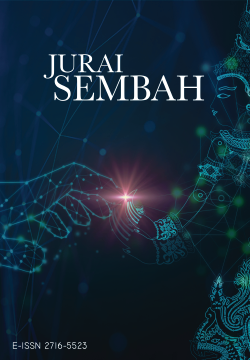The Cross-Cultural Traditions of Korea and Bali: Performing Arts Tradition as a Cultural Diplomatic Representation
DOI:
https://doi.org/10.37134/juraisembah.vol4.2.2.2023Keywords:
Cultural Diplomacy, Cross-Cultural, Performing ArtsAbstract
This study aims to understand the significance of the cross-cultural process of traditional performance texts as a means of bilateral cultural diplomacy. 50 years of bilateral relations between Korea and Indonesia in “Korea-Indonesia Performing Arts of Drama Dance & Music of Thousand Years” by KCCI (Korean Cultural Center Indonesia) became a concrete form of a cross-cultural phenomenon in the realm of traditional performing arts. The essence of cross-cultural is realized in the form of collaborative performances of Korean and Balinese traditional arts as a representation of Indonesia. A collaborative kecak performance intersects with the repertoire conventions of 부채춤 [buchaechum] & 사물놀이 [samulnori] with the Sri Kamelawi & Legong dance are the material objects in this study. Data was obtained using the qualitative multi-sited ethnography method through in-depth interviews and supported by secondary data through literature study, observation, and documentation. This research uses cultural diplomacy theory as a theoretical basis and main guidance for interpreting data. The crossover between Korean and Balinese performance texts is a process of negotiating traditional performance forms that have been established temporally and reduced in certain aspects. The process of reducing the convention is the way to create a new temporary convention, which becomes an alternative performance form for transmitting the values of 50 years of Korea-Indonesia bilateral relations. Bilateral cultural diplomacy is a concrete forum for cultural dialectics. Performing arts are an appropriate medium for the representation of cultural diplomacy.
References
Carlson, M. (1996). Performance: A critical introduction. Routledge.
Howard, K. (2016). SamulNori: Korean percussion for a contemporary world. Routledge.
Kang, S., & Yoo, H. (2016). Korean percussion ensemble (Samulnori) in the general music classroom. General Music Today, 29(3), 5.
Kedutaan Besar Republik Indonesia di Seoul, Republik Korea. (n.d.). Profil negara dan hubungan bilateral. https://kemlu.go.id/seoul/id/pages/hubungan_bilateral/558/etc-menu
Malborg, K. (2005). Korean dance. Ewha Womans University Press.
Matra, I. W., Pancawati, L. P., & Sariwigna, K. A. (2022). Eksetensi legong keraton. Widyadari, 23(2), 295-306. https://ojs.mahadewa.ac.id/index.php/widyadari/article/view/2260
Melissen, J. (2005). The new public diplomacy. Palgrave.
Patjinka, E. (2014). Cultural diplomacy in theory and practice of contemporary international relations. Politické Vedy, 95-108.
Raditya, M. H. B. (Ed.) (2016). Sal Murgiyanto: Hidup untuk tari. ISI Press.
Rana, K. S. (2007). Bilateral diplomacy. DiploFoundation.
Restian, A. (2017). Pembelajaran seni tari di Indonesia dan mancanegara. UMM Press.
Suartaya, K. (2019). Peluang gamelan gong kebyar di tengah tantangan zaman. In R. Widyarto (Ed.), Seni pertunjukan nusantara peluang dan tantangan: Memasuki era revolusi industri 4.0 (pp. 43-50). Fakultas Seni Pertunjukan Institut Seni Indonesia Denpasar.
Susanti, E. (Ed.) (2023). Merajut persahabatan memupuk kepercayaan: 50 tahun hubungan diplomatik Korea-Indonesia. PT Kanisius.
UNESCO. (n.d.). UNESCO universal declaration on cultural diversity. Retrieved from [https://en.unesco.org/about-us/legal-affairs/unesco-universal-declaration-cultural-diversity]
Yulianto, V. I. (2015). Reframing modernities in contemporary Indonesia: An ethnographic study of ideas of center and periphery on Sulawesi and Java. Regiospectra.
Downloads
Published
Issue
Section
License
Copyright (c) 2023 Dewa Ngakan Made Ari Putra Taman Bali, I Made Christian Wiranata Rediana

This work is licensed under a Creative Commons Attribution-NonCommercial-ShareAlike 4.0 International License.



